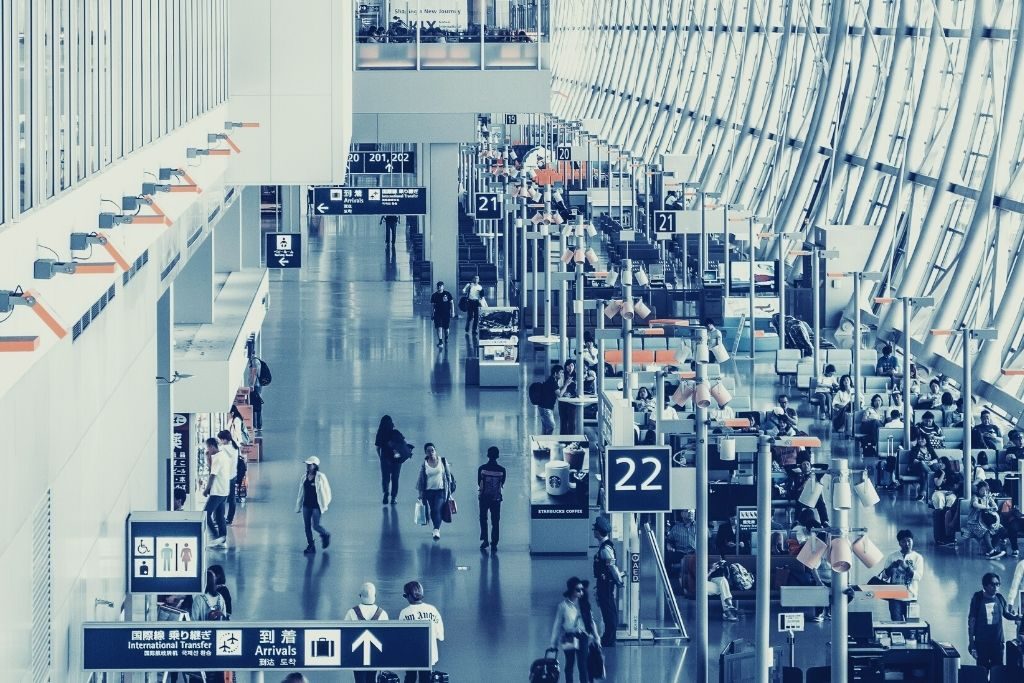There are about 100,000 flights every day worldwide, with about half a million people in the air at any given time. This translates to millions of ID checks, border passes printed — and possibly thousands lost a day. Thanks to the developments in biometrics technologies, which are getting more accurate and reliable by day, the International Air Transport Association (IATA) is working on developing an ambitious project: One ID.
One ID is an integrated identity management solution that can help passengers to streamline their journeys through the elimination of paper documents facilitated by biometric technologies.
The IATA describes the objective of One ID as to “achieve a truly interoperable system coordination between airports, airlines, and governments.”
How Does One ID Work?
One ID matches the passengers’ face and passport with a document-free process, using a paperless travel token, face fingerprint, or an iris scan for a seamless, secure, and efficient travel process.
The One ID tools strictly collect the minimally necessary data from consenting passengers on the principle that it is processed transparently, lawfully, and fairly. This means only authorized stakeholders have access to it, in accordance with the applicable data regulations, such as the General Data Protection Regulation (GDPR) in Europe.
What Are the Benefits of One ID?
Even though the COVID-19 pandemic temporarily stalled its growth, airline travel is a thriving industry thanks to the burgeoning global middle class and improving aviation infrastructure.
However, it’s also a delicate and competitive one due to the rising fuel cost. Thus, it became imperative for the industry to look for solutions to cut costs, increase efficiency and user-friendliness. One ID caters to all three of these needs — and more — as a single tool while also ensuring greater security.
One ID Enhances Security
One ID will facilitate security enhancements in international borders, aviation, and airport infrastructure in countless ways. For instance, there’s evidence that biometrics can be a vital counter-terror tactic since airports can use them to screen employees and control access to sensitive areas. This prevents terrorists from getting a job as an aviation professional — or posing as one — to implement their plans.
Furthermore, it can help combat human trafficking and other cross-border criminal activities since it dramatically decreases the risk of a person passing as someone else. It makes it a lot easier to track or catch any criminal.
One ID Improves Cost-Effectiveness and Efficiency
One ID significantly lessens the burden on the staff, who no longer have to spend hours doing manual ID checks. The staff will be able to monitor the passenger activity in real-time and initiate smart queuing, which can reduce walkway congestion and balance in-airport traffic flow.
Thus, One ID optimizes airports’ human resources, time, and space efficiency, while reducing congestion and delays. This way, airlines will benefit from all the passenger process improvements with happy customers, which will likely translate into commercial opportunities.
One ID Provides Better Passenger Experience
Unlike passports, badges, or boarding passes, it’s not possible to lose one’s biometric credentials. Using One ID, passengers will no longer need to juggle between different documents. With a single identification, they will be easily recognized by all service providers. Ultimately, it will enable passengers to arrive at the airport ready to fly in nearly every travel scenario.
With enhanced security, smart queuing, and replacing the hassle of paper-based documents with the convenience of having everything in one place. This saves time, takes away the frustration from traveling, and ultimately increases passenger satisfaction — which is an essential thing for revenues and bottom lines of aviation companies.
The Future of Air Travel is Biometrics

“Ensuring a relaxed passenger experience end-to-end is one of the most essential business strategies for anyone in the air travel industry to thrive in such a competitive environment,” says Lars Rosenberger, Vice President VBO Airport & Airline Solutions at dormakaba Deutschland GmbH. “One ID is among the safest bets to achieve just that.”
Biometric solutions in aviation are nothing new; they’ve already been an integral part of the world of airline travel for some years. However, One ID is the tool that will reform identity management by robust improvements that will be of benefit not only to airports and airlines, but to multiple stakeholders, including governments, commercial entities, and private individuals.
The rise of biometric technologies will facilitate frictionless passenger processes, amplifying the joy of travel without the hassle.






